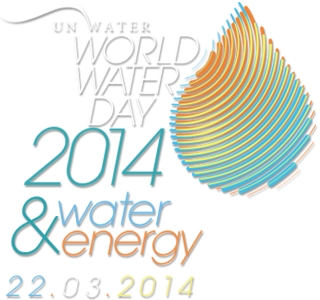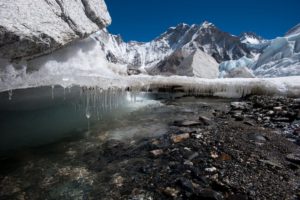World Water Day 2014 : Don’t forget the mountains

By Aditi Mukherji —–
Mountains are the water towers and storehouses of energy for our world, yet each year, come World Water Day, very little thought is given to the mountains and the people who live in mountain areas. This is a big mistake, especially considering this year’s theme of Water and Energy. Take for example the Hindu Kush Himalayan (HKH) region. It is the source of ten large Asian river systems and provides water, energy, and ecosystem services to more than 210 million people directly and indirectly to 1.3 billion people living in downstream areas. This region also has a huge hydropower potential of 500 GW, of which only a fraction has been developed so far. Yet, benefits of providing water and energy to downstream users rarely reach mountain dwellers, though they often bear the costs of the unsustainable use of both.
It is obvious that water and energy are interconnected in more ways than one. The most obvious connection is hydropower – the production of energy using water. But an equally important, but often overlooked, aspect of this nexus is the use of energy to produce water. This is exemplified by the pumping of groundwater. Groundwater is now the most important source of irrigation in the region – South Asia has roughly 25 million wells and tubewells, all used for agriculture. In Bangladesh and the plains of Nepal, much of the population depends on groundwater, which is often pumped with relatively expensive diesel fuel due to lack of electricity. The same holds true in the neighboring Indian states of Uttar Pradesh, Bihar, and West Bengal. Both water and energy are needed to produce, process, and transport food – the third dimension of this nexus. The approach of looking at water, energy, and food within an interconnected nexus is now widely accepted and used to improve our understanding of their interlinkages at global, regional and local scales. I would like to highlight how this important nexus plays out in a mountain context. From a mountain perspective, there are at least three different, yet interrelated, ramifications of this nexus.
First is the issue of upstream-downstream linkages within a shared, transboundary river basin. Mountains are the source of water, which then flows downstream to be used for various purposes, the most important of which is food production. Given the scarcity of land and uneven and often inhospitable terrain in the mountains, mountains cannot grow enough food to meet its needs, often sourcing its food from the plains. The plains, on the other hand, derive energy security from the hydro-electricity generated in mountain areas. This energy is used for many things, including the pumping of groundwater to grow crops. One key issue here is: how do we ensure that mountain communities are able to derive benefits from the services (water and energy) that they provide to downstream users? This calls for an integrated approach the spans entire river basins where nexus principles have been internalized by all key decision makers. This also needs to be underpinned by a framework for regional cooperation that ensures that energy and other services derived from the mountains are adequately paid for by downstream users.
Another issue is that of the seasonality of water and energy demands. How does one meet the energy needs of dry season irrigation in the plains at a time when river water levels are running low? The obvious answer is to construct hydropower dams with storage. While such dams are indeed needed, the inherent fragility of mountain ecosystems makes them environmentally problematic. Here again, the nexus approach provides a less obvious, but equally appealing solution. The transition zone between mountains and plains happens to be an active recharge zone for groundwater. In the plains just below this transition zone, say in parts of Nepal Terai and in Indian Bihar, there is a large unmet irrigation demand during the summer season – a demand that is unmet even though groundwater is available in plenty. This is due to the lack of access to affordable energy. Electricity produced through hydropower schemes upstream can be used to exploit groundwater and bring down groundwater levels in the summer season and then the aquifer storage can be effectively recharged using monsoon flow. Again, this requires an integrated approach where surface and groundwater are co-managed.
Finally, there is the issue of water, food, and energy security at a local scale in mountain regions. This calls for local solutions. Solar pumps are increasingly used in the mountains to transport water up from streams to settlements, which are often located on ridges high above deep river gorges, for household use. Furthermore, there are examples of dedicated small hydropower plants being used to generate electricity locally to pump up surface water from rivers to irrigate farms in the flat lands, or tar, in the mountains.
Himalayan river systems play a significant role in downstream agriculture and food security in South Asia. The global community must look to mountains to resolve issues of energy, water, and food security, and to help people cope. To date, the conservation efforts of mountain people remain unrewarded, yet we have all reaped the benefits. Institutional mechanisms need to be established and strengthened to secure payment and reward mechanisms for mountain ecosystems services including surface and groundwater, water storage, and others relating to energy and food security. What happens to the mountains is of global concern – whether or not there will be enough food and energy for all will depend in part on what happens in mountain regions.
Mukherji (amukherji@icimod.org) is Theme Leader of Water and Air at the International Centre for Integrated Mountain Development (ICIMOD), Kathmandu














